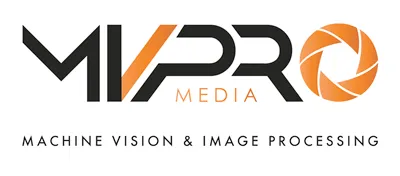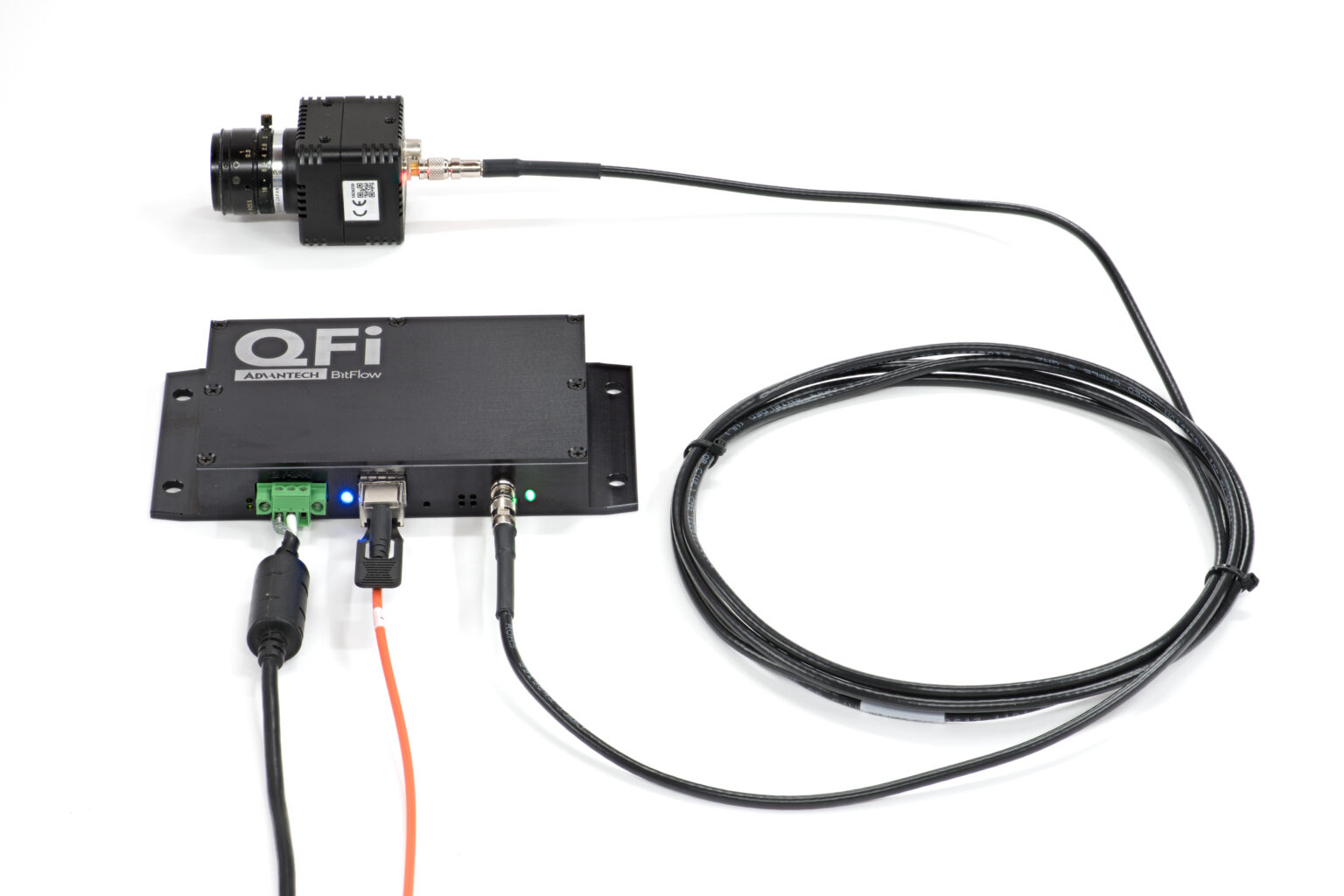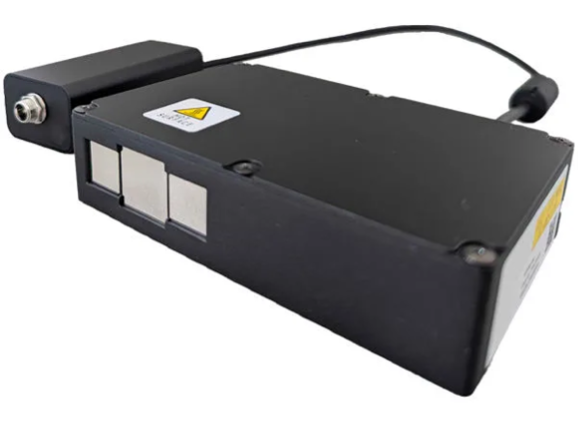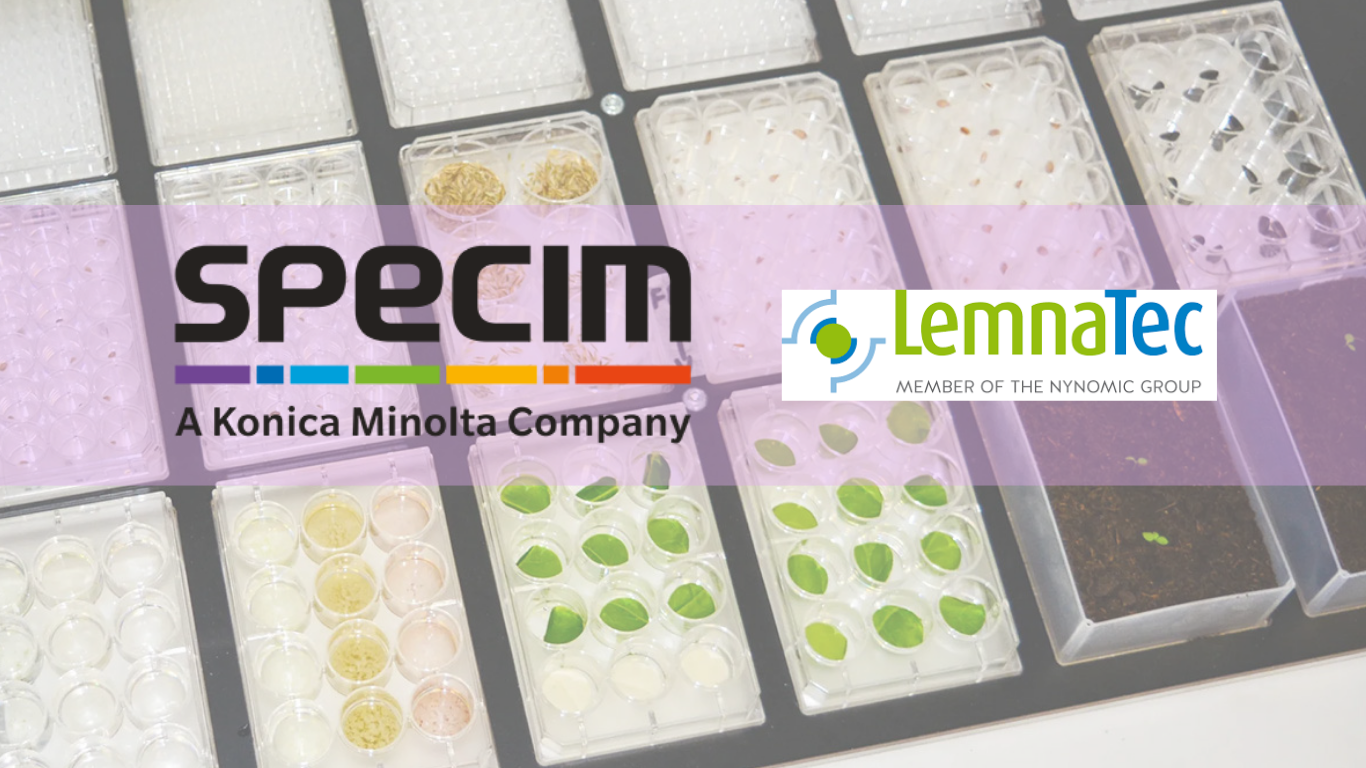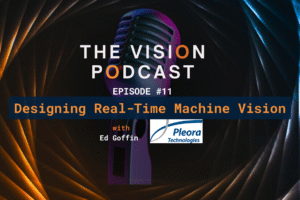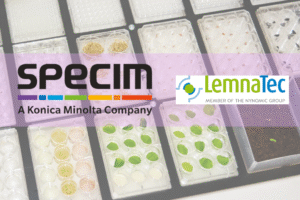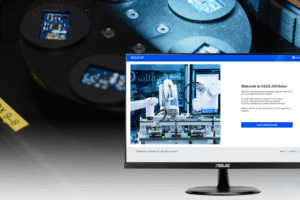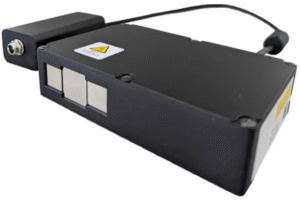The next generation of machine vision connectivity is on the horizon. The CoaXPress (CXP) committee is preparing to unveil CoaXPress v3.0, a major update poised to cement CXP’s reputation as the high-speed backbone for real-time industrial imaging.
Although the release date hasn’t been officially confirmed, industry insiders suggest that CXP v3.0 will deliver data rates of up to 25 Gbps per link. A leap from the 12.5 Gbps speeds supported by the current v2.1 standard. In multi-cable configurations, that could push aggregate throughputs past 100 Gbps, setting a new benchmark for high-resolution, high-frame-rate vision systems.
From Coax to Fiber: The Future of CXP
One of the headline features of CXP v3.0 is the deeper integration of CoaXPress over Fiber (CoF), moving the standard beyond traditional coaxial cables. Fiber’s superior bandwidth, speed, and distance capabilities make it a natural evolution, particularly for large-scale or distributed imaging systems.
CoF transmits the existing CoaXPress protocol over standard Ethernet physical-layer components, combining the deterministic, low-latency performance of CXP with the scalability and cost efficiency of Ethernet infrastructure. With fiber, transmission distances can stretch from today’s 35 meters at 12.5 Gbps to potentially several miles, all while reducing signal loss and electromagnetic interference.
Despite its embrace of fiber, CXP v3.0 will maintain hybrid compatibility with 75-ohm coaxial cables, ensuring a smooth transition for integrators and end-users. The update is also expected to include enhancements to the 42 Mbps uplink channel, expanded Power-over-CoaXPress (PoCXP) support, and improved serial communications.
A Legacy of Speed
Since its debut in 2010, CoaXPress has consistently pushed the limits of camera-to-computer data transfer. Originally developed to address the rising bandwidth demands of CMOS imaging sensors, the standard has evolved through multiple versions each doubling down on performance and reliability.
From its first demonstration at the 2008 Vision trade show to the introduction of CoF in 2021’s v2.1 release, CoaXPress has become a cornerstone of industrial automation, scientific research, and defense imaging.
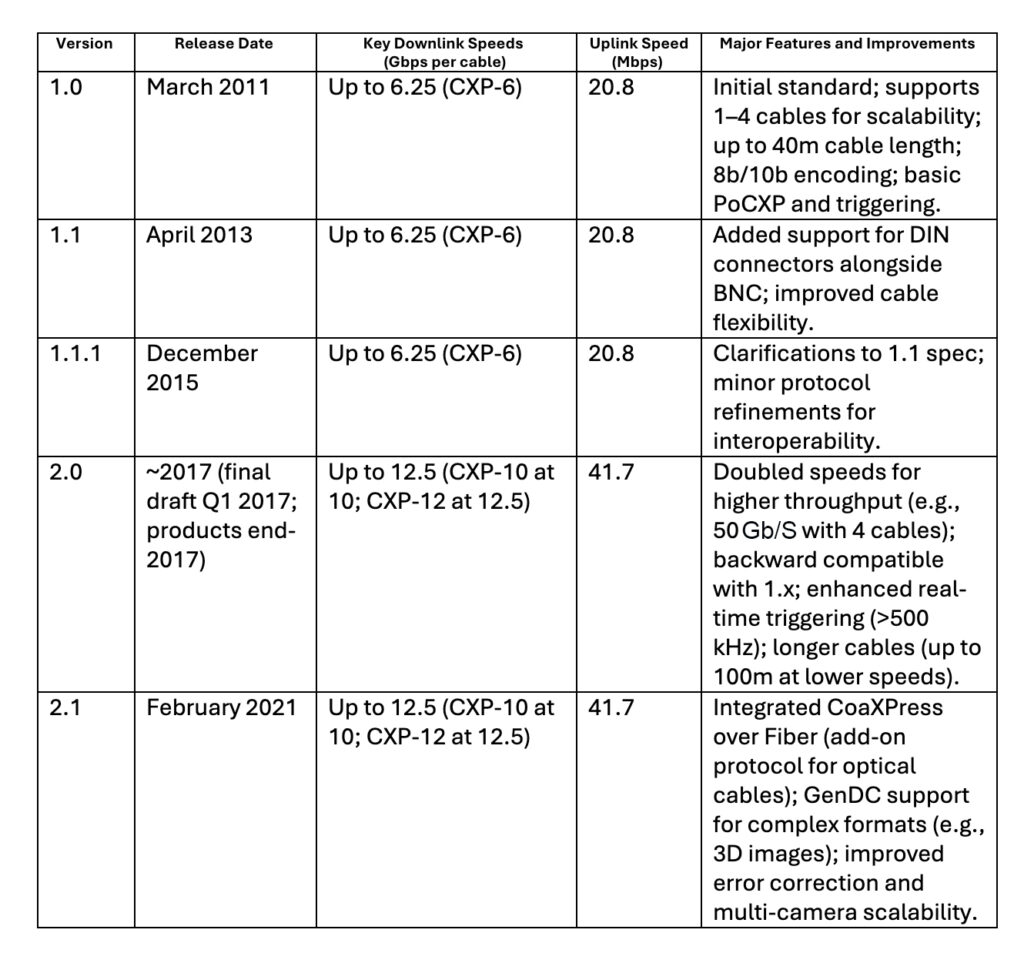
BitFlow Leads the Charge
Woburn, Massachusetts-based BitFlow, a long-time leader in frame grabber technology, is already positioning its products for the CXP v3.0 era. The company’s newest Claxon fiber frame grabbers and QFi copper-to-fiber converters are designed to leverage CoF’s high-speed, long-distance potential.
The QFi converter connects standard coaxial CXP cameras directly to BitFlow’s Claxon fiber grabber, allowing integrators to mount cameras up to 130+ feet (40+ meters) from the system computer. Meanwhile, the Claxon fiber frame grabber supports CXP-12 speeds up to 12.5 Gb/s using standard QSFP+ transceivers, with Direct Memory Access (DMA) ensuring efficient data transfer directly to the GPU.
“These solutions bridge the gap between today’s coaxial systems and tomorrow’s fiber networks,”
“We’re making sure our customers can scale seamlessly as the CoaXPress ecosystem evolves.”
Expanding Across Industries
The benefits of CoF and the upcoming v3.0 standard extend far beyond factory floors. Sectors such as medical imaging, life sciences, security, and defense all of which depend on low-latency, high-bandwidth image acquisition stand to gain from faster frame rates, longer distances, and more reliable data integrity.
For more information, visit www.bitflow.com or www.advantech.com.
